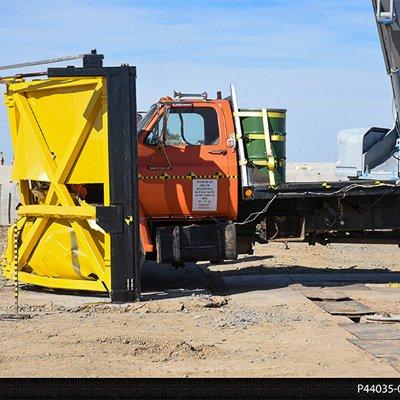In the last decade, the Mediterranean Sea has assumed a centrality in what could be defined as a ‘Problematic chessboard’, which is a particularly complex and constantly changing geopolitical context. The control of the Euro-Mediterranean border has always represented one of the ‘unsolved’ problems for the entire European Community, given that the Mediterranean is the meeting point of the Eurasian continent with Africa.
To make matters worse, the political instability of many states of the Middle East and of the coastal states of North Africa is grafted, which has allowed some great foreign powers to enter the Mediterranean basin.
Guardia di Finanza – Italian maritime police force
Italy must necessarily exercise a function of safeguarding its national interests
On a geopolitical scenario that is complex to say the least, Italy must necessarily exercise a function of safeguarding its national interests, through the only police force particularly dedicated to air-maritime control: the Guardia di Finanza.
The monitoring of commercial traffic, which is typically subject to control by financiers, in order to verify the correctness of the routes travelled in international waters, is accompanied by new and more complicated activities aimed at economic-financial police activities, but also smuggling, drug trafficking, trafficking in toxic waste and illegal immigration.
Maintaining order and public safety in the marine environment
For the air-sea exploration conducted in international waters, an activity that requires varied skills and professionalism of particular depth, the Guardia di Finanza, as the only Police Force responsible for ensuring the services of order and public safety in the marine environment, relies on the Central Naval Air Command, which is responsible for the direction, coordination and control of the components of the offshore air and naval sector. The Command depends on:
- il Aeronavale Operational Command, established at the headquarters of Pomezia - Pratica di Mare (RM), which coordinates the supervisory activity carried out on the high seas, at a national level, superordinate to: n. 1 Air Maritime Exploration Group, based in Pomezia - Pratica di Mare; n. 3 Aeronaval Groups (Messina, Taranto and Cagliari);
- il Naval Center (Formia - LT), which provides centralised logistics and administrative functions for the needs related to the sector, as well as naval standardisation tasks;
- il Aviation Center (Pomezia - Pratica di Mare), which performs the functions of technical, logistical and administrative support, relating to the air sector and the training tasks in the field of post-training and air standardisation.
Aeronavale Operational Command
In consideration of the importance of the Mediterranean basin, in terms of ‘congestion’ of maritime traffic, it is very clear what the difficulties of police bodies may be, in controlling such a large and densely trafficked geographical context.
These activities are constantly conducted by the Aeronavale Operational Command of the Air Maritime Exploration Group of Pratica di Mare, the only department of the corps equipped with fixed-wing aircraft.
Air Maritime Exploration Group
Leonardo team was received at the command of the Pratica di Mare base, by Gen. b. Joselito Minuto
On a misty and cold morning in early December 2021, Leonardo team was received at the command of the Pratica di Mare base, by Gen. b. Joselito Minuto, Commander of the Aviation Centre, and from Gen. b. Alessandro Carrozzo, Air-Naval Operational Commander.
To welcome them at the base and to accompany them throughout the day was ten. pil. Piero Valentini, an officer of great personal and professional value, always ready to fulfill all requests for information or clarifications.
Varied air and naval missions carried out
After the welcome coffee, accompanied by the traditional elegance that has always distinguished the Guardia di Finanza, it is General Minuto who illustrates the peculiarities of the part. ‘Winged’ of the GdiF and the numerous and varied missions that are required of the Aeronavale Command.
It is amazing how with a small number of aircraft, specialists and pilots, the Air Maritime Exploration Group is able to meet a multiplicity of requests for intervention that is nothing short of impressive - from the monitoring of sea routes, to the fight against drug trafficking, from the transport of prisoners, to the transport of migrants, up to missions Frontex.
It is General Carrozzo who proudly shows us a map, which highlights the places touched by the countless missions conducted by the Group, from the European continent to Russia, reaching the countries of Southeast Asia, and then again towards the West, until it reaches the European coasts that overlook the Atlantic Ocean.
Safeguarding Italy’s national interests and assets
Here, once again, the so-called ‘Italic genius’, which has always distinguished them from other world populations and which brings back the memory of a phrase - Italians go beyond the impossible!
Next, moving to the apron, where the aircraft are parked, Maj. pil. Francesco Pepenella, officer in charge of conducting the ‘pre-flight briefing’ informs about all the flight and safety procedures, providing with all the useful information on the aircraft, on which the mission of ‘Maritime traffic monitoring’ is carried out: an ATR 72 MP made by Leonardo, called P-72B, according to the particular set-up that combines innovative digital technologies of ‘Surveillance’ and the advantages of a low-cost passenger transport aircraft.
P-72B - ATR 72 MP aircraft
The geographical area of reference for the mission is a stretch of the Adriatic coast
The geographical area of reference for the mission is a stretch of the Adriatic coast. P-72B is an ATR 72 MP aircraft capable of conducting any type of maritime surveillance, ranging from the monitoring of maritime routes to the fight against drug trafficking, smuggling and illegal immigration, along with the protection of fishing and the prevention and interruption of activities, such as piracy.
The aircraft can also act as a flying command and control post, and is capable of carrying out the function of transporting personnel. The heart ‘technological’ of the aircraft is Leonardo’s ATOS (Airborne Tactical Observation and Surveillance) removable mission system, a system capable of managing a wide range of aeronautical sensors.
ATOS (Airborne Tactical Observation and Surveillance)
Once on the aircraft, Lieutenant Valentini reassures about the plane’s great reliability in turbulent conditions and the great flight experience accumulated by the pilots of the Guardia di Finanza, over the decades.
Immediately after take-off and after a few small ‘jolts’, the Leonardo team positioned themselves next to the two system operators, in order to try to understand all the features of the ATOS system. For the duration of the mission (about two hours), they exercise an action ‘stressful’ on the two operators, according to the countless questions and requests for identification tests of the multiple ‘Targets’ that is offered during the flight.
Identifying ‘anomaly’ in each target
Each target, in this case – boats, is followed and analysed in an attempt to identify every possible one ‘anomaly’, which can determine a level of ‘Alert’ on target. In the case of a fishing vessel, for example, the excessive speed of the boat or the absence of fishing nets can constitute an anomalous element that deserves an appropriate investigation.
The mission system operators, thanks to the high multirole capacity provided by the Multifunctional Operator Console (MOC), can operate with the three main sensors, radar, electro-optical, as well as with the ESM (for the detection, analysis and 360° identification of any electromagnetic emitter).
FLIR system (Forward Looking InfraRed)
The FLIR system (Forward Looking InfraRed) allows a perfect acquisition of images at night or with reduced visibility
The FLIR system (Forward Looking InfraRed), a term that identifies a technology of imaging through the use of infrared, allows a perfect acquisition of images at night or with reduced visibility. The magnification capacity of the FLIR is nothing short of impressive, when considering that the images taken are captured at an altitude of almost 5,000 metres.
The technologies described can be configured for any type of tactical/operational mission, even to exchange data and information at high speed, with command and control centres via advanced tactical data links and satellite communication systems.
The system stands out for its net-centric and C4ISR (Command, Control, Communication, Computer, Intelligence, Surveillance and Reconnaissance) capabilities. It should be noted that, depending on its commercial derivation, the P-72B can guarantee its crew a remarkable level of comfort, an aspect that allows the conduct of missions that go beyond 8 hours.
Visit to the Historical Air Service Museum
After numerous ‘Analysis of anomalous targets’, the Leonardo team head to Pratica di Mare, on a visit to the Historical Air Service Museum of the Guardia di Finanza, in Pratica di Mare. The time for a quick working breakfast, kindly offered by the Gen. Minuto and by Gen. Carrozzo, to whom they combine the ‘Post flight debriefing’, also to exchange points of view and considerations on the mission carried out.
Quickly, but on foot since the buildings are almost adjacent, the staff head towards the Historical Museum of the Air Service, located inside the base, where the lieutenant cs Maurizio Di Terlizzi is waiting for them, who illustrates the rich equipment present in a special hangar of almost 1,000 square metres, dedicated to the preservation of an extraordinary historical collection that includes 5 helicopters, an airplane, and a substantial amount of memorabilia, suits and flight equipment and even weapons.
Historical representation of origins of the ‘winged’ component
The entire guided tour of the Museum, thanks to the presence of documents, photos, uniforms, relics, and aircraft carefully restored, and kept in perfect condition, gives the visitors a rare historical representation of the origins of the ‘winged’ component of the Guardia di Finanza, which has its origins in the year 1911.
The Leonardo team bid farewell to the leaders of the Base with the promise to meet again soon, once again to describe the extraordinary and incessant work produced daily; in that spirit of sacrifice and confidentiality that has always distinguished the Guardia di Finanza.
They accorded a special thanks to Gen. Carrozzo, as the courteous architect of the impeccable organisation of the team’s visit to the base and to ten. Valentini, who did his utmost to satisfy their requests and to the crew of the aircraft, with which the Leonardo team carried out the operational mission.



















